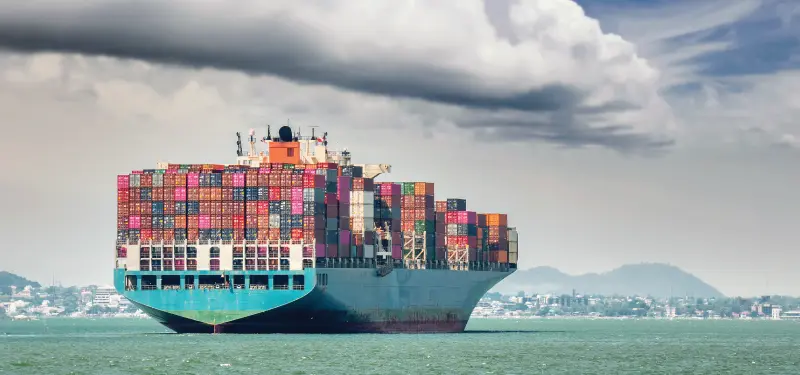Major Shipping Alliances 2025

In the global container shipping industry, alliances have traditionally played a pivotal role in shaping market dynamics, improving efficiency, and ensuring reliable services across major trade lanes. By 2025, these alliances have evolved even further—both in composition and strategy—to address shifting trade patterns, technological advancements, and rising environmental concerns. Below is an overview of the major alliances and notable carriers operating in 2025.
Ocean Alliance
Members: CMA CGM, COSCO Shipping, Evergreen, OOCL
Since its inception, the Ocean Alliance has grown into one of the most powerful partnerships in global shipping, with a collective reach spanning nearly every major trade lane. The group continues to leverage economies of scale by sharing vessels, port calls, and operational resources.
CMA CGM
Now among the largest container lines in the world, CMA CGM has remained at the forefront of digital transformation and environmentally sustainable shipping solutions. Their investment in alternative fuel vessels—such as LNG- and biofuel-powered ships—has become a cornerstone of the alliance’s push toward lower emissions.
COSCO Shipping
China’s state-run shipping behemoth continues to expand aggressively, particularly within the intra-Asia market. COSCO’s close connections with Chinese infrastructure developments (ports, rail, and logistics networks) position the company as a linchpin in the Belt and Road Initiative, ensuring robust cargo volumes and enhanced hinterland connectivity.
Evergreen
Headquartered in Taiwan, Evergreen has played a significant role in forging stronger trade links between Asia and Europe. By 2025, the carrier has added a new generation of 24,000+ TEU (twenty-foot equivalent unit) mega-ships, contributing to the Ocean Alliance’s competitiveness on long-haul routes.
OOCL
Now fully integrated under COSCO’s umbrella, OOCL still maintains its strong brand identity. Known for reliability and premium service, OOCL’s presence has bolstered the alliance’s capacity offerings and helps maintain smooth Trans-Pacific and intra-Asia services.
Notable Developments
- Sustainability Initiatives: Ocean Alliance members are leading the charge on collaborative green shipping corridors, reducing single-use plastics in container packaging, and trialing carbon capture on select vessels.
- Digital Integration: The alliance has steadily integrated advanced analytics to optimize scheduling, reduce port congestion, and streamline maintenance.
Gemini Cooperation
Members: Maersk, Hapag-Lloyd
A recent rebranding from the former 2M alliance (which historically included MSC and Maersk), the Gemini Cooperation emerged in response to MSC’s decision to operate independently starting in 2024. By 2025, this alliance has honed its focus on service reliability and technological innovation.
Maersk
As one of the pioneers in container shipping, Maersk remains a hallmark of operational efficiency. In the Gemini Cooperation, Maersk has shifted toward integrated logistics solutions, investing heavily in end-to-end supply chain services—from freight forwarding to last-mile delivery. Maersk’s new electric and methanol-fueled vessels are at the forefront of reducing the carbon footprint on major trade lanes.
Hapag-Lloyd
This German carrier has brought robust Atlantic and Latin America-focused networks to the partnership. Since joining the Gemini Cooperation, Hapag-Lloyd has capitalized on Maersk’s scale, combining service routes to increase overall efficiency while maintaining a high standard of customer service.
Notable Developments
- Technological Collaboration: Maersk and Hapag-Lloyd have developed a shared digital platform, enabling real-time cargo visibility and AI-driven route optimization.
- Decarbonization: Both lines have introduced next-generation vessels running on methanol, ammonia, and hybrid electric power.
Premier Alliance
Members: Ocean Network Express (ONE), Yang Ming, HMM
Formed as a counterbalance to the Ocean Alliance and the Gemini Cooperation, the Premier Alliance has continued to refine its service offerings, especially in the Asia-to-Europe and Trans-Pacific corridors.
ONE (Ocean Network Express)
A joint venture of the three major Japanese carriers (K Line, MOL, NYK) since 2018, ONE has steadily improved operational inefficiencies. By 2025, the alliance’s bold magenta branding is familiar at ports worldwide, symbolizing a commitment to innovative solutions and dedicated customer service.
Yang Ming
Renowned for its strong presence in Greater China and Southeast Asia, Yang Ming has joined forces with ONE and HMM to offer seamless connections across Asia, North America, and Europe. The company has also spearheaded digital platforms to manage cargo flows and coordinate intermodal transport.
HMM (Hyundai Merchant Marine)
The South Korean carrier has focused on upgrading its fleet with ultra-large container vessels and state-of-the-art reefer capabilities to capture high-value cargo segments (e.g., perishables and pharmaceuticals). HMM’s government-backed initiatives—aimed at expanding South Korea’s maritime influence—underscore the alliance’s global competitiveness.
Notable Developments
- Unified Booking Platform: Customers can easily book space across any of the Premier Alliance carriers through a single digital platform, minimizing complexity and reducing administrative overhead.
- Focus on Reefer Services: The alliance collectively invests in refrigerated container technology, capturing rising demand for temperature-controlled cargo worldwide.
MSC Independent
Member: MSC
By 2025, the Mediterranean Shipping Company (MSC) has firmly established itself as the largest container line operating independently. Once part of the 2M alliance with Maersk, MSC split to pursue its own path—buying new tonnage at an unprecedented rate and forming selective slot charter agreements with other carriers.
- Global Expansion: MSC’s direct control over massive newbuilding orders has enabled it to offer frequent sailings across key trade lanes on its own.
- Selective Partnerships: While officially independent, MSC maintains tactical partnerships (slot swaps, vessel sharing in niche routes) with smaller carriers to remain competitive on secondary and emerging routes.
- Environmental Initiatives: With a fleet renewal program, MSC is testing ammonia-fueled propulsion and advanced emissions-scrubbing technology on large container ships.
Non-Alliance Lines: ZIM and Others
Outside of the major alliances, a handful of medium-sized and niche carriers operate independently or in smaller, ad-hoc agreements. ZIM leads this group, continuing its reputation for innovation and adaptability.
ZIM
- Regional Specialization: ZIM maintains a strong presence in the Mediterranean, intra-Asia, and cross-Atlantic routes, offering flexible schedules and competitive transit times.
- Technological Ventures: The line is known for experimenting with blockchain-based cargo tracking and other digital-forward solutions.
Smaller Carriers
- Niche Markets: These carriers serve specialized corridors (e.g., African trades, Latin American coastal routes) or handle project cargo and breakbulk shipping needs.
- Adaptive Strategies: Without the backing of a large alliance, smaller carriers frequently form short-term slot agreements to mitigate the rising costs of fuel, port fees, and vessel operations.
Conclusion
By 2025, the container shipping landscape has reached a new level of complexity, with alliances playing an even more strategic role in shaping global trade. Ocean Alliance, Gemini Cooperation, Premier Alliance, MSC Independent, and various non-allied carriers each present unique value propositions to shippers around the world. Key trends—such as embracing digital technology, improving sustainability, and pursuing fleet expansion—have led to a more resilient, adaptable, and greener shipping industry overall.
For businesses and logistics managers, staying updated on alliance changes and carrier strategies is critical. As the container shipping sector continues to evolve, close collaboration between carriers, ports, and technology providers will be the driving force behind smoother supply chains, reduced environmental impact, and greater transparency in global trade.

